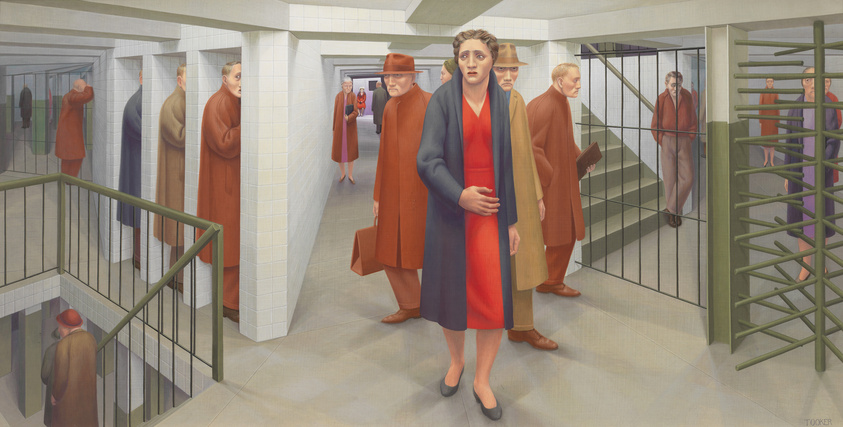The Subway is the best known of the figurative paintings George Tooker made in response to the social injustices and isolation of postwar urban society—paintings that find an analogue in the period’s existentialist philosophy. In The Subway, Tooker employed multiple vanishing points and sophisticated modeling to create an imagined world that is presented in a familiar urban setting. Whether closed off in tiled niches or walking down the long passageway, each androgynous, anxiety-ridden figure appears psychologically estranged, despite being physically close to others in the station. The central group of commuters is locked in a grid of the metal grating’s cast shadows, while the labyrinthine passages seem to lead nowhere, suspending the city’s inhabitants in a modern purgatory. As Tooker remarked, he chose the subway as the setting for this painting because it represented “a denial of the senses and a negation of life itself.”
On view
Floor 7
Date
1950
Classification
Paintings
Medium
Tempera on composition board
Dimensions
Overall: 18 1/2 × 36 1/2in. (47 × 92.7 cm)
Accession number
50.23
Credit line
Whitney Museum of American Art, New York; purchase, with funds from the Juliana Force Purchase Award
Rights and reproductions
© Estate of George Tooker. Courtesy DC Moore Gallery, N.Y.
Audio
-
0:00
George Tooker, The Subway, 1950
0:00
Narrador: ¿Alguna vez has tenido la sensación, cuando entras a una estación del metro, de que tal vez ya no puedas salir? Esta pintura de George Tooker está llena de entradas y salidas, y aun así las personas en la imagen parecen estar atrapadas. Mira a la mujer en el centro de la pintura con el sobretodo gris. Puedes ver que ha puesto un pie delante del otro, pero su cuerpo parece congelado. La expresión de ansiedad en su rostro sugiere que sabe que no va hacia ningún lado.
Observa cómo esta escena en el metro se asemeja a un laberinto o a una prisión, con sus puertas y barrotes. Mira el lado izquierdo de la pintura. Fíjate en las tres figuras con sobretodo, paradas dentro de cubículos estrechos. Podría tratarse de gente utilizando teléfonos públicos, pero se ven misteriosos y hasta siniestros. Para Tooker, el metro es un símbolo de la ansiedad y alienación de la vida moderna. Tooker no creó esta imagen con pinturas al óleo sino con témpera de huevo. En esta técnica, se mezclan los pigmentos con yemas de huevo para que la pintura seque rápidamente. A Tooker le gustaba este método porque sentía que se adaptaba al realismo minucioso de sus pinturas.
-
George Tooker, The Subway, 1950
In “Untitled” (America) (Kids, Spanish)
0:00
George Tooker, The Subway, 1950
0:00
Narrator: A primera vista, esta parece ser una estación de metro común y corriente. Pero detente y mírala bien. La estación está llena de gente, sin embargo todos viajan solos. Fíjate que ninguno de los personajes es exactamente igual a otro, sin embargo se asemejan de un modo siniestro. Ninguno mira a los otros. ¿Qué opinas de la expresión en sus rostros?
Y una cosa más: ¿cómo se sale de allí? Esta pintura de George Tooker está repleta de entradas y salidas; sin embargo, la gente parece atrapada. Atrapada por ese techo tan bajo, por los barrotes y accesos cerrados y por el extraño ángulo del pasillo del fondo. Para mí, no es un lugar agradable. No sé qué opinas tú, pero parece que todos los retratados piensan lo mismo: ¡déjenme salir!
-
George Tooker, The Subway, 1950
In Where We Are (Spanish)
0:00
George Tooker, The Subway, 1950
0:00
Narrator: ¿Has tenido alguna vez la sensación, al entrar a una estación de metro, de que quizá nunca volverás a salir? Esta pintura de George Tooker está repleta de entradas y salidas, pero la gente en la imagen parece estar atrapada. Mira a la mujer que lleva un abrigo gris en el centro del cuadro. Da la impresión de que intenta caminar, pero su cuerpo parece congelado. La ansiedad en su rostro indica que tal vez sepa que no podrá ir a ninguna parte.
Esta escena de una estación de metro, con esos barrotes y salidas enrejadas, se asemeja más bien a un laberinto o una prisión . Mira hacia el lado izquierdo de la pintura. Hay tres siluetas con sobretodos parados dentro de estrechos cubículos. Bien pueden estar utilizando teléfonos públicos, pero todos resultan misteriosos e incluso siniestros. Para Tooker, el metro es símbolo de la ansiedad y el aislamiento de la vida moderna. Para pintar esta imagen, en vez de pintura al óleo utilizó temple al huevo. Esta técnica consiste en mezclar los pigmentos con yema de huevo, para que la pintura seque rápidamente. A Tooker le atraía esta forma de trabajo porque sentía que se adaptaba al cuidadoso realismo de sus obras.
-
0:00
Henry Koerner, Mirror of Life, 1946
0:00
Narrator: On the right-hand side of Henry Koerner’s Mirror of Life, a nude man peers out a window at the spectacle of the world. Joseph Leo Koerner, the artist’s son and a professor of art history at Harvard University, describes the role of the man.
Joseph Leo Koerner: His leaning gesture—which I know my father spent a lot of time getting right—is there to sort of combine the interior scene of everyday life and of the erotic life of a person with the exterior world in which everything that can go on in life is encapsulated, from eating and buying clothes to leisure pursuits, like dancing.
In the far distance in the scene of a man killing another man—probably Cain killing Abel—one is given a sense that whatever one sees is not just everyday life but it's sort of everyday life raised to a slightly higher magnitude.
In the middle ground you see people picking up bits from a treeless forest. And that's a little abbreviated version of the Vienna woods.
But at the same time, there are obviously references to the cityscape of New York in the style of buildings, the South of the United States in the scene of the old man and woman sitting on the porch.
Narrator: The references to New York and Vienna—as well as the sense of anxiety that pervades the painting—have their roots in Koerner’s own life.
-
Henry Koerner, Mirror of Life, 1946
In Where We Are (Spanish)
0:00
Henry Koerner, Mirror of Life, 1946
0:00
Narrador: A la derecha de Mirror of Life, de Henry Koerner, un hombre desnudo se asoma por la ventana para contemplar el espectáculo del mundo.
Joseph Leo Koerner, hijo del artista y profesor de Historia del Arte en la Universidad Harvard, describe el papel de la figura masculina.
Joseph Leo Koerner: Su postura inclinada —sé que mi padre dedicó mucho tiempo a lograr representarla correctamente— sirve para ligar, de alguna manera, la escena interior de la vida cotidiana y la vida erótica de una persona con en el mundo exterior, en el que todo lo que puede ocurrir en la vida se encuentra encapsulado, desde comer y comprar ropa hasta las actividades de ocio, como el baile.
A la distancia, en la escena de un hombre asesinando a otro –probablemente Caín matando a Abel–, el espectador siente que lo que ve no es sólo vida cotidiana, sino una especie de vida diaria elevada a una magnitud ligeramente superior.
En el plano central, se observan personas recolectando en un bosque de árboles deshojados. Es una versión abreviada de los bosques de Viena.
Sin embargo, al mismo tiempo, vemos claras referencias al paisaje urbano de Nueva York, por el estilo de los edificios, y al sur de los Estados Unidos en la escena en la que vemos a una pareja de ancianos sentada en el porche.
Narrador: Las referencias a Nueva York y Viena —así como la sensación de ansiedad que impera en la pintura— tienen sus raíces en la propia vida de Koerner. Para escuchar sobre su vida, oprima el botón de “play” [AB2].
-
George Tooker, The Subway, 1950
In “Untitled” (America) and Where We Are (Kids)
0:00
George Tooker, The Subway, 1950
0:00
Narrator: At first glance, this looks like an ordinary subway station. But take a close look. The station is full of people, yet each one is traveling alone. Notice how none of them are exactly the same—yet they’re eerily similar. Notice how they are not looking at each other. And what do you think of the looks on their faces?
And another thing: how do you get out? This painting by George Tooker is full of entrances and exits, yet the people appear trapped. Trapped by the low ceiling, the bars and gates to the right and left, and the strange angle of the hallways behind. This isn’t a subway station I’d want to be in. And I don't know about you, but I don't think any of these people want to be there, either.
-
0:00
George Tooker, The Subway, 1950
0:00
Narrator: Have you ever had the feeling, as you enter a subway station, that you might somehow never get out again? This painting by George Tooker is full of entrances and exits, yet the people in the image appear trapped. Look at the woman in the center of the painting with the grey overcoat. You can see she’s put one foot in front of the other, but her body seems frozen. The anxious expression on her face suggests she knows she’s going nowhere.
Notice how much this subway scene resembles a labyrinth or a prison with its bars and gates. Look to the left side of the painting. Note the three figures in overcoats standing inside narrow cubicles. They could be people using public telephones, but they seem mysterious and even sinister. For Tooker, the subway is a symbol for the anxiety and estrangement of modern life. Tooker made this image not with oil paints but with egg tempera. In this technique, pigments are mixed with egg yolk so that the paint dries very quickly. Tooker liked the medium because he felt it suited the careful realism of his paintings.
Exhibitions
-

The Whitney’s Collection: Selections from 1900 to 1965
June 28, 2019–May 1, 2025
-
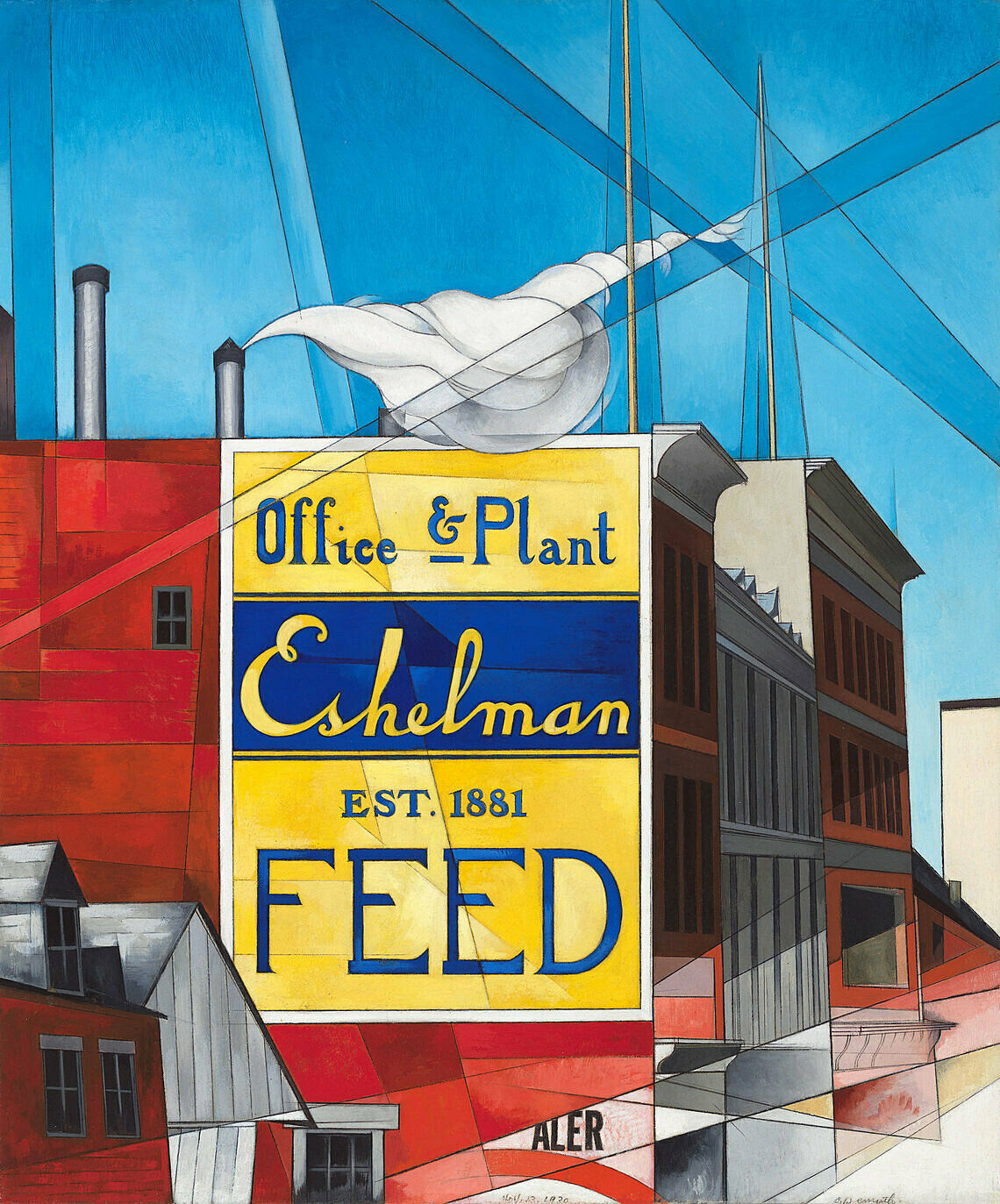
Where We Are: Selections from the Whitney’s Collection, 1900–1960
Apr 28, 2017–June 2, 2019
-

Human Interest: Portraits from the Whitney’s Collection
Apr 2, 2016–Apr 2, 2017
-
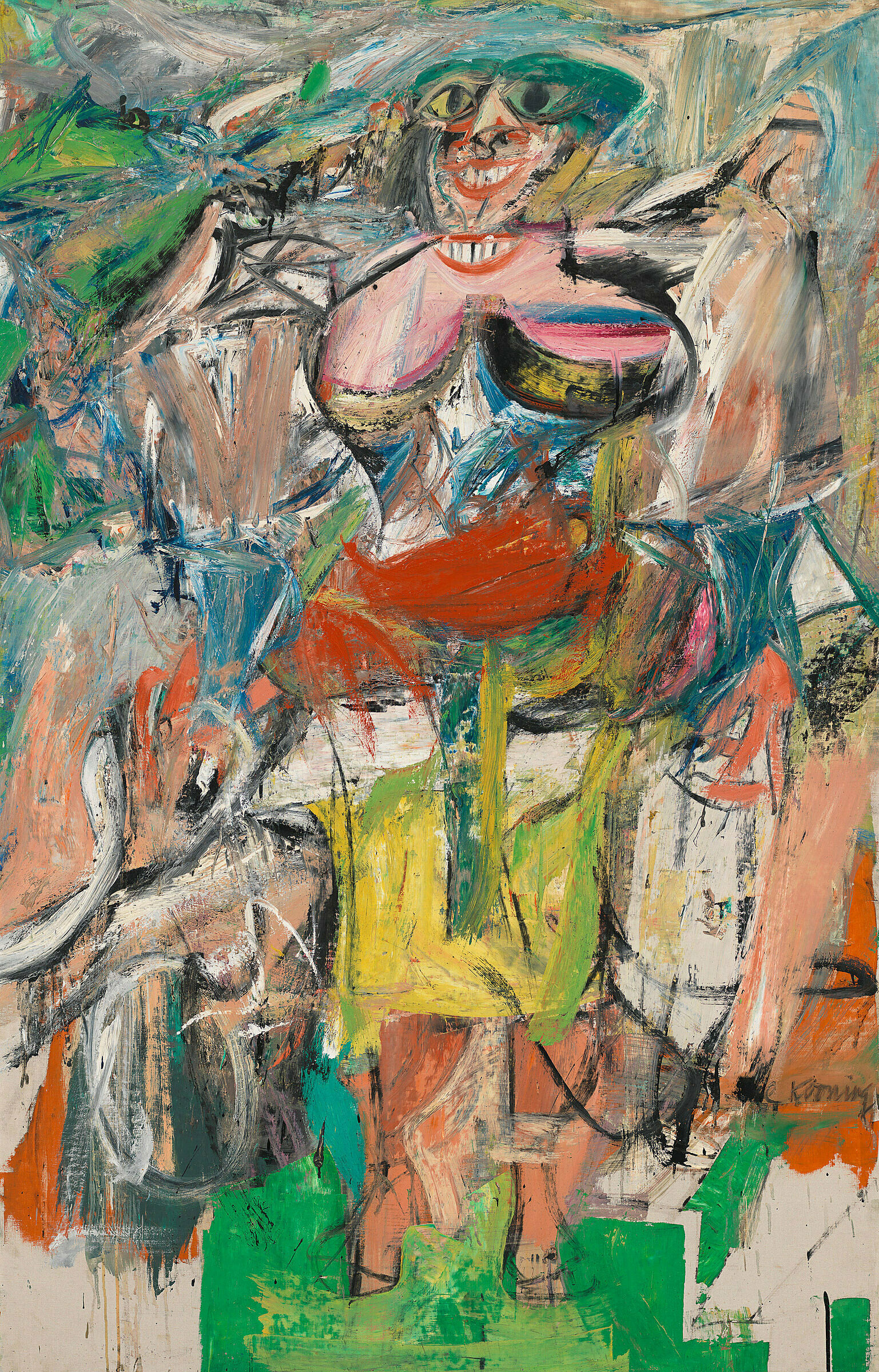
The Whitney's Collection
Sept 28, 2015–Apr 4, 2016
-

America Is Hard to See
May 1–Sept 27, 2015
-
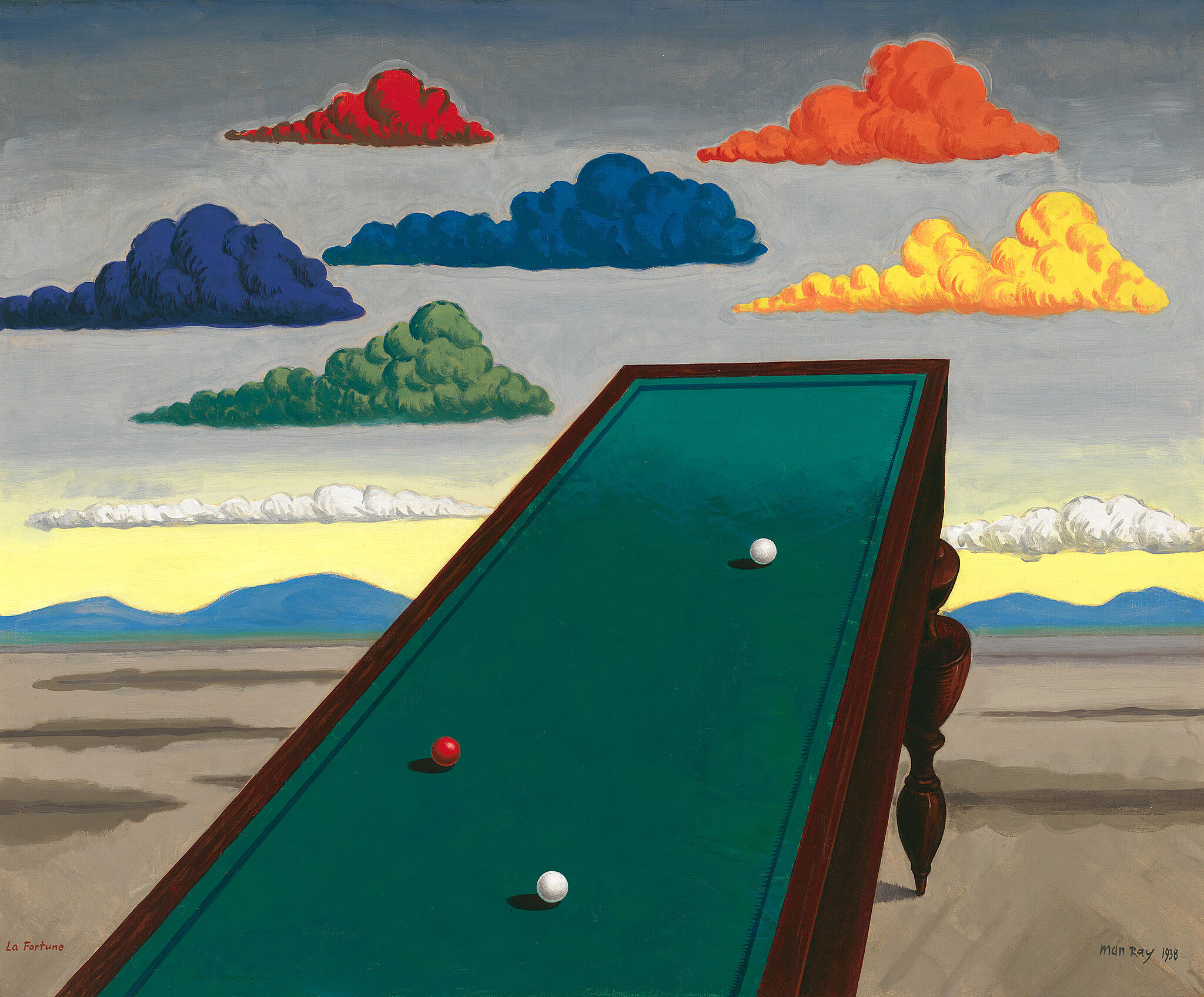
Real/Surreal
Oct 6, 2011–Feb 12, 2012
-
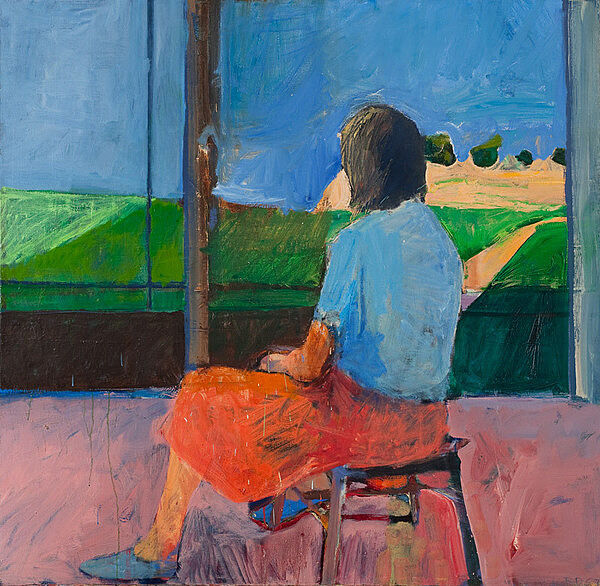
Collecting Biennials
Jan 16–Nov 28, 2010
-

The Whitney’s Collection
Jan 30, 2008–Jan 3, 2010
-
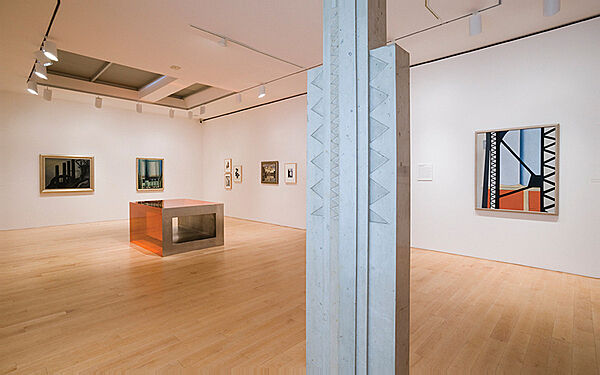
Modernisms
Aug 29, 2007–Jan 13, 2008
-
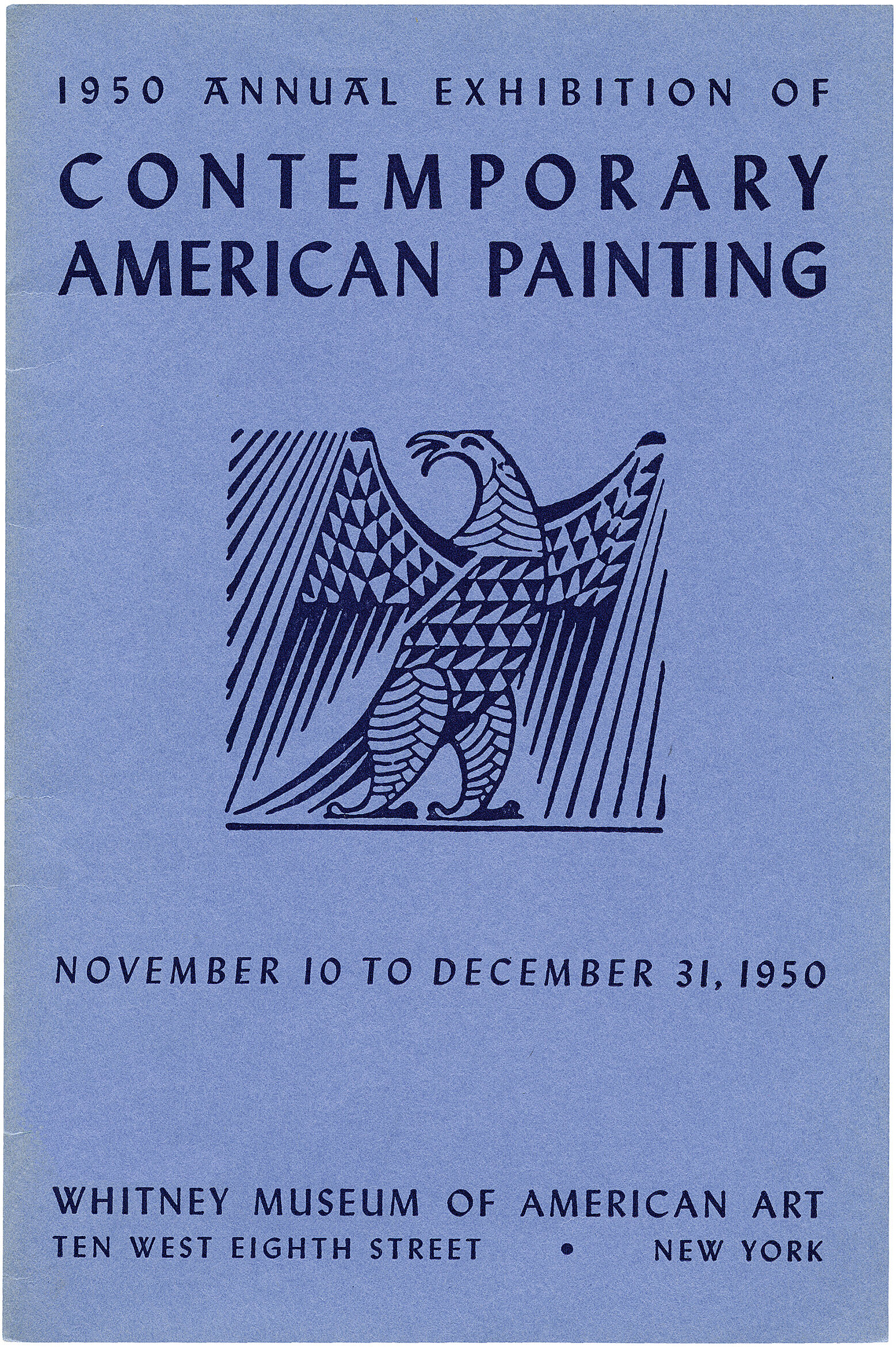
1950 Annual Exhibition of Contemporary American Painting
Nov 10–Dec 31, 1950
Installation photography
-
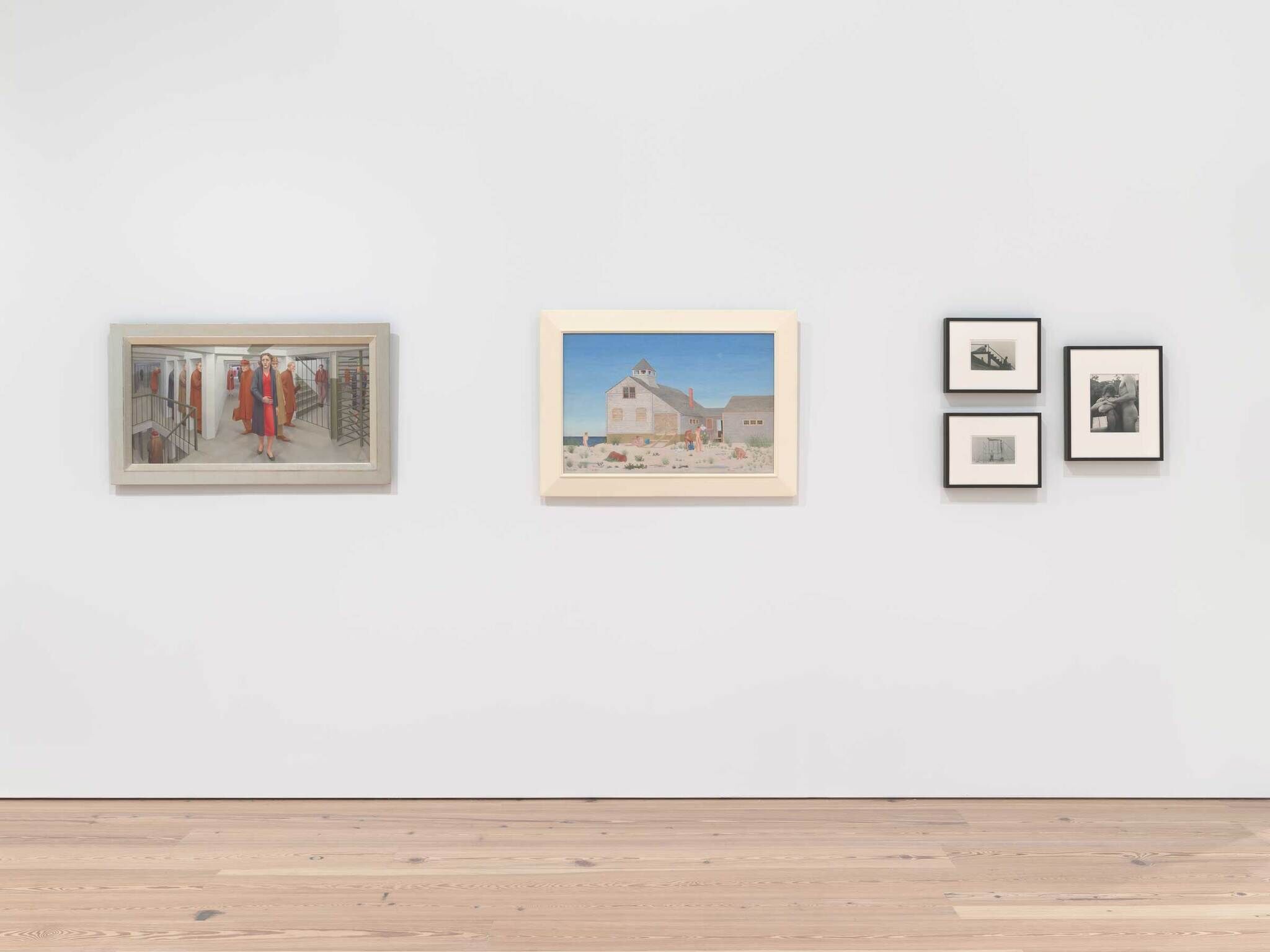

Installation view of “Untitled” (America) (Whitney Museum of American Art, New York, July 5, 2025-). From left to right: George Tooker, The Subway, 1950; Margaret French, The Moon by Day, 1939; PaJaMa, Margaret French, George Tooker and Jared French, Nantucket, c. 1946; PaJaMa, Margaret French, Paul Cadmus and José Martinez, Fire Island, 1939; PaJaMa, Chuck Howard and Ted Starkowski, 1953. Photograph by Ron Amstutz
From the exhibition “Untitled” (America)
-
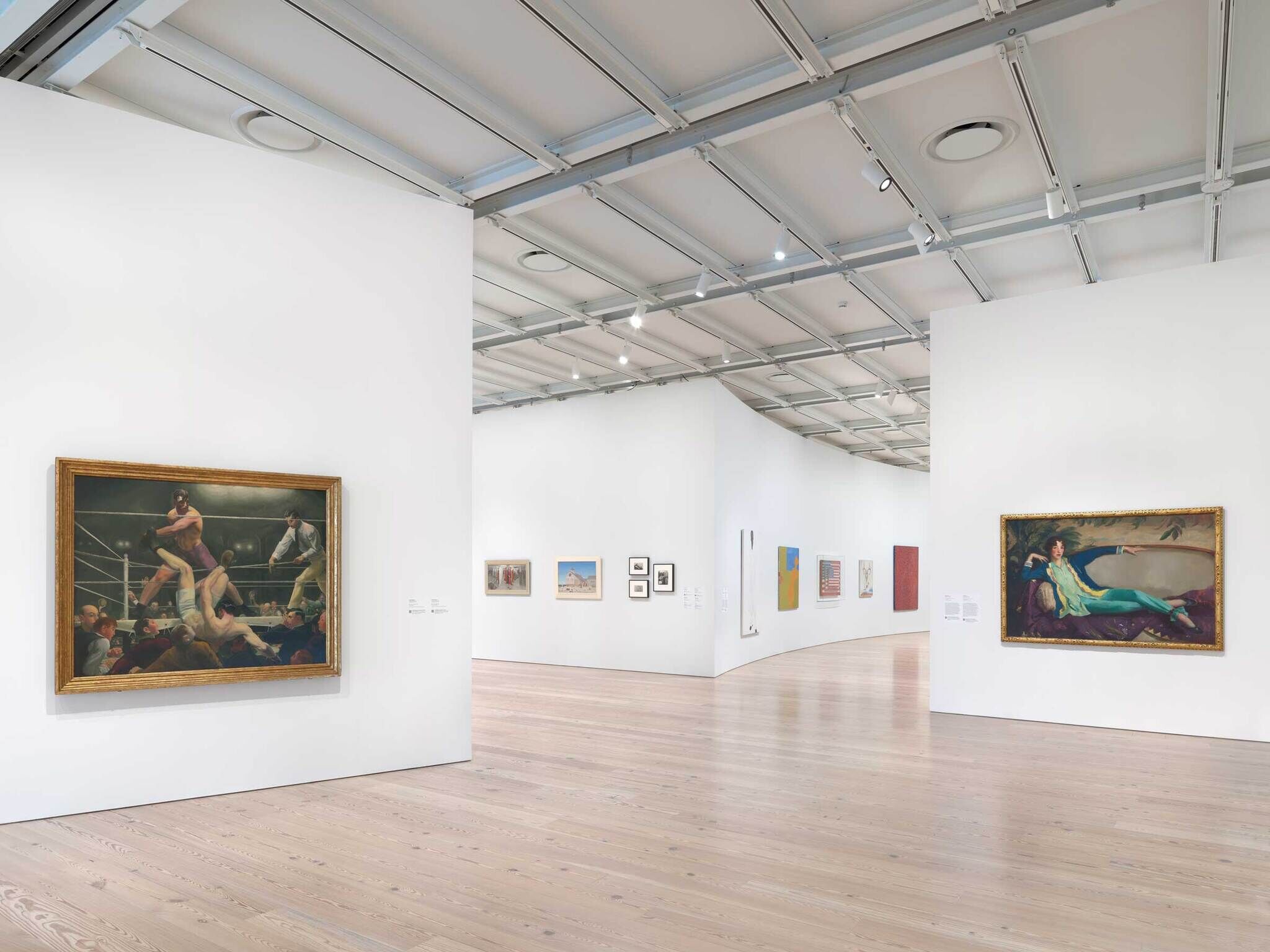

Installation view of “Untitled” (America) (Whitney Museum of American Art, New York, July 5, 2025-). From left to right: George Bellows, Dempsey and Firpo, 1924; George Tooker, The Subway, 1950; Margaret French, The Moon by Day, 1939; PaJaMa, Margaret French, George Tooker and Jared French, Nantucket, c. 1946; PaJaMa, Margaret French, Paul Cadmus and José Martinez, Fire Island, 1939; PaJaMa, Chuck Howard and Ted Starkowski, 1953; Barkley L. Hendricks, Steve, 1976; Kay WalkingStick, April Contemplating May, 1972; Jasper Johns, Three Flags, 1958; Georgia O’Keeffe, Summer Days, 1936; Alma Thomas, Mars Dust, 1972; Robert Henri, Gertrude Vanderbilt Whitney, 1916. Photograph by Ron Amstutz
From the exhibition “Untitled” (America)
-
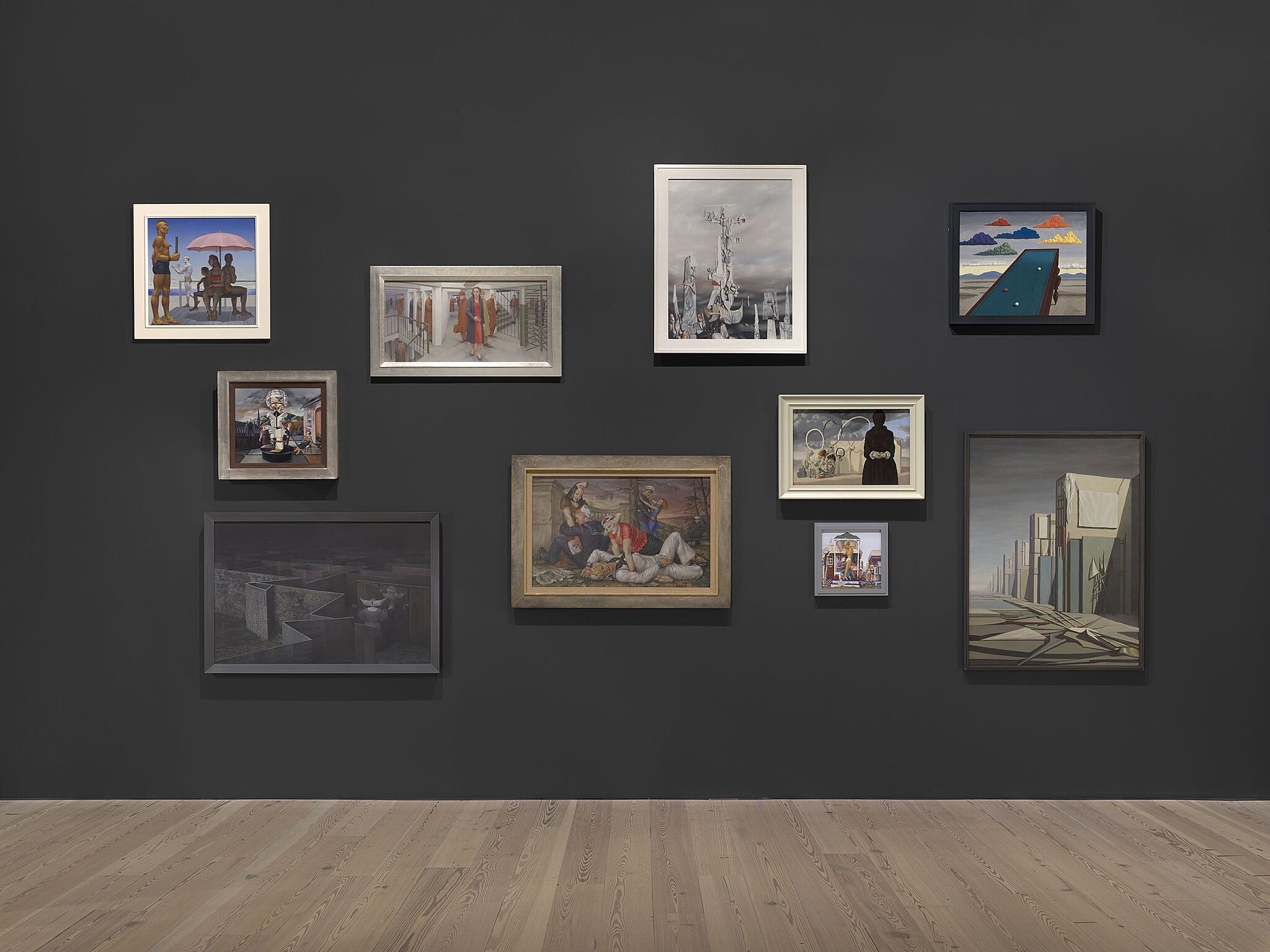

Installation view of The Whitney’s Collection: Selections from 1900 to 1965 (Whitney Museum of American Art, New York, June 28, 2019- ). Clockwise, from top left: Jared French, State Park, 1946; George Tooker, The Subway, 1950; Yves Tanguy, The Wish, 1949; Man Ray, La Fortune, 1938; Kay Sage, No Passing, 1954; Federico Castellón, The Dark Figure, 1938; Paul Cadmus, Fantasia on a Theme by Dr. S., 1946; Paul Cadmus, Sailors and Floosies, 1938; Robert Vickrey, The Labyrinth, 1951; Peter Blume, Light of the World, 1932. Photograph by Ron Amstutz
From the exhibition The Whitney’s Collection: Selections from 1900 to 1965

